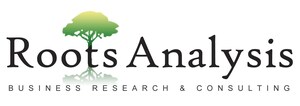The Market for Elastomeric Closures for Pharmaceutical Packaging is Projected to Grow to USD 9.3 Billion by 2030, Claims Roots Analysis
Driven by the growing complexity of modern pharmacological interventions, industry stakeholders have turned to more versatile materials for the fabrication of compatible container closures; in this context, several elastomers have demonstrated significant potential
LONDON, Aug. 14, 2019 /PRNewswire/ -- Roots Analysis has announced the addition of the "Elastomeric Closure Components Market for Vials, Cartridges and Syringes, 2019-2030: Focus on Caps, Needle Shields, Plungers, Stoppers, Seals, Tip Caps and Other Closures" report to its list of offerings.
The materials used to fabricate pharmaceutical packaging components are extremely important in terms of preserving the stability, efficacy and safety of drug formulations. In fact, according to the USFDA, in the last two years, there have been over 2,000 drug and device recalls owing to packaging-related concerns. Elastomeric closures, with various types of coatings (such as FluoroTec® and Teflon®), have emerged as a promising option for pharmaceutical containers.
To order this 400+ page report, which features 185+ figures and 235+ tables, please visit this link
Key Market Insights
Over 240 types of elastomeric closures are currently available
Presently, stoppers are the preferred closures, representing nearly 69% of all the products, followed by plungers (13%), caps / seals (7%) and tip caps / needle shields (7%). Popular stoppers include (in alphabetical order) NovaPure® Lyo Stopper, Omniflex3G®, PremiumCoat™, RayDyLyo® Cap, and Westar® RU Lyo Stopper.
Nearly 95% elastomeric closures are available in pre-sterilized format
Commonly used sterilization techniques for such components include gamma irradiation, steam sterilization, and ethylene oxide; the use of such closures has been shown to save a significant amount of time by eliminating the need for multiple steps in the overall fill / finish process.
The market is highly fragmented; more than 80% of the products are manufactured by mid-sized and large manufacturers
Over 47% of companies manufacturing elastomeric closures are mid-sized business entities (~50-500 employees), whereas 34% are large firms (>500 employees) and around 19% are small-sized players (<50 employees). Prominent examples of small and mid-sized companies engaged in this domain are (arranged in alphabetical order, established after 2004) Jiangyin AiSun Import & Export, JOTOP GLASS, Sonata Rubber, UD Pharma Rubber Products and Vighnesh Rubbers.
Over time, several partnerships have been established, focused on evaluating novel packaging materials
Acquisitions and licensing agreements have been the most popular type of deals inked in this domain.
The above mentioned deals represented over 40%, each, of the total number of instances reported in the period 2007-2019. Moreover, packaging containers / closures and affiliated technologies have emerged as primary focus areas for companies involved in such deals.
230+ drugs / therapies were approved in the past five years, of which over 35% are packaged using elastomeric closures
As more pharmacological products are approved and launched, the demand for container closures is anticipated to increase. Particularly, in terms of elastomeric materials, halobutyl rubber, butyl rubber, and polypropylene have emerged as popular fabrication materials.
In fact, the demand for elastomeric closures is expected to grow at an annualized rate of 5.3%
The current demand for elastomeric closures is estimated to be over 140 billion units and it is likely to grow to 250 billion units by 2030. Further, currently the Asia-Pacific region represents the highest share (48%) in terms of demand for elastomeric closures, compared to other regions.
Elastomeric closures for vials and cartridges, represent over 80% of the current market share
The major proportion of the market share (43%) in 2019 is expected to belong to closures intended for use in vials. By 2030, elastomeric closures for syringes are anticipated account for 19% of the market's earnings; this can be attributed to the gradually increasing popularity of self-administration enabling drug delivery devices.
Automation and robot-assisted technologies are likely to be a key enabler within this domain
The role of robotics in pharmaceutical manufacturing and fill / finish operations is evolving; key players offering automation technologies and equipment for aseptic processing include (in decreasing order of number of proprietary robotic systems) Staubli, Seiko Epson, Marchesini Group, Massman Automation Designs and Tekpak.
To request a sample copy / brochure of this report, please visit this link
Key Questions Answered
- What are the popular types of elastomeric materials and coatings being used for the fabrication of closures for vials, ampoules and syringes?
- What are the different types of drugs that require elastomeric closures?
- How do parameters such as dosage form, route of administration and storage temperature of drugs, influence choice of elastomeric closures?
- Who are the leading manufacturers of elastomeric closures across the globe?
- What are the benefits of pre-sterilized closures? Who are the key players that offer pre-sterilized container-closure kits / systems?
- What are the key drivers of partnership activity in this industry?
- What are the key challenges associated with manufacturing of elastomeric components?
- What is the current and future demand for parenteral containers and their respective closures?
- What are the key factors that are likely to influence the evolution of the elastomeric closures market?
- How is the current and future market opportunity likely to be distributed across key market segments and geographies?
The USD 9.3 billion (by 2030) financial opportunity within elastomeric closures market has been analyzed across the following segments:
- Type of packaging container
- Vials
- Syringes
- Cartridges
- Type of packaging closure
- Seal
- Stopper
- Cap
- Plunger
- Barrel
- Needle Shield
- Sterilization status
- Pre-sterilized
- Unsterilized
- Key geographical regions
- North America
- Europe
- Asia Pacific
- Rest of the World
The report also features inputs from eminent industry stakeholders, according to whom the anti-leaching property and limited interaction potential of elastomeric materials are some of the key reasons why such materials are preferred for fabrication of closures. The report includes detailed transcripts of discussions held with the following experts:
- Julien Maréchal (Business Development and Technology Director, Aseptic Technologies)
- Malcolm Gilmore (Facilitator, BioPhorum Operations Group)
- Marco Pederiva (Marketing and Sales Director, Lonstroff)
- Konstantin Kazarian (Project Manager of Business Development, PYRAMID Laboratories)
The research covers brief profiles, featuring an overview of the company, its financial information (if available), and a description of its product(s), highlighting the type of closure, container, composition and sterilization status. Each company profile includes recent developments related to elastomeric closures and parenteral packaging industry of the companies.
- Aptar Pharma
- Daikyo Seiko
- Datwyler Group
- DWK Life Sciences
- Hebei First Rubber Medical Technology (a Part of DESHENG Group)
- Jiangsu Hualan New Pharmaceutical Material
- Lonstroff (a Part of Sumitomo Rubber Industries)
- Ompi (a Part of Stevanato Group)
- West Pharmaceutical Services
For additional details, please visit
https://www.rootsanalysis.com/reports/view_document/elastomeric-closure-components-market-for-vials-cartridges-and-syringes-2019-2030-focus-on-caps-needle-shields-plungers-stoppers-seals-tip-caps-and-other-closures/255.html or email [email protected]
You may also be interested in the following titles:
- Medical Device Contract Manufacturing Market, 2019-2030
- Pre-Sterilized / Ready-to-Use Primary Packaging: Focus on Cartridges, Syringes and Vials, 2018-2030
Contact:
Gaurav Chaudhary
+1(415)800-3415
[email protected]
SOURCE Roots Analysis

WANT YOUR COMPANY'S NEWS FEATURED ON PRNEWSWIRE.COM?
Newsrooms &
Influencers
Digital Media
Outlets
Journalists
Opted In





Share this article